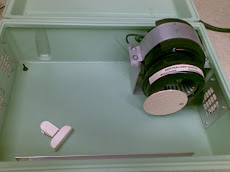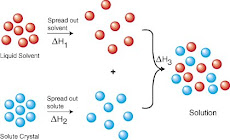February 27, 2009 Edited by Rick Lingle
Pearson Acquires Goodman Packaging Equipment >>
Pearson Packaging Systems, a leading manufacturer of secondary packaging equipment announced December 3, 2008, it has signed an agreement finalizing the acquisition of Goodman Packaging Equipment, a Chicago-area based producer of top loading case packers. Click here to read more.
Pearson Packaging Systems
Pearson's New GTL-UNI Case Packer (Goodman Universal™) >>
The Pearson GTL-UNI Case Packer (Goodman Universal™) is a fully automatic case packer for horizontal packing, custom built to your project specifications. Click here to learn more on top loading from Pearson
Pearson Packaging Systems
Order Parts Online, Save 10%! >>
Order parts today on Pearson's website and save 10% with the promo code "Buy Online"! Click here to order today!
Pearson Packaging Systems
Pearson's New VP15-T VersaPack Hand Pack System >>
Pearson's new VP15 VersaPack® Hand Pack System is the perfect solution for all of your hand packing operations. Click here to learn more on automating your manual operations!
Pearson Packaging Systems
Thanks for Attending the Robotic Invasion! >>
You survived the Invasion! But the adventure continues! Call 800.732.7766 today to see how you and Pearson can solve your Secondary Packaging Machinery Needs!
Pearson Packaging Systems
FEATURED ARTICLE
Optimizing the packaging-sustainability alliance
The trend of sustainability executives provides packaging professionals with opportunities for increased visibility, reliance, and clout.
By Sterling Anthony
IN OTHER NEWS
SpoonLidz offers a value-added solution >>
Greener in Europe: Cadbury's 'eco-eggs' >>
It's official—recession is top of mind >>
Sustainability executives: They have multisyllabic, imposing titles, that ascend all the way to vice president. Their growing numbers reflect the recognition that sustainability is a source of competitive advantage. Their job descriptions charge them with devising and implementing environmental strategies that are not merely compliance-driven but proactive and innovative. Toward that pursuit, some of the strongest allies available to the sustainability executive are packaging professionals.
But packaging professionals should not assume that their pivotal role is adequately understood by the sustainability executive; rather, they should take the initiative in forging an alliance that furthers the company's mission, goals, and objectives.
Sell the basics
Sustainability encompasses everything that the company does that impacts air, soil, water, and people; therefore, the concerns of the sustainability executive extend far beyond packaging. Still, packaging is unique, a truth that should be sold to the executive, to provide her with the perspective necessary to derive optimal value from the function.
Throughout society, packaging is ubiquitous and conspicuous, ever-visible to stakeholders, such as investors, consumers, retailers, regulators, and activists. Those stakeholders often conveniently—though not always justifiably—regard the physical packaging as an index of the company's commitment to sustainability because other company initiatives are less obvious. Whether that perception of packaging is to be applauded or bemoaned is not the issue; rather, the company should accept it as reality, in order to use packaging for strategic purposes. It's that reality that should assure packaging a high priority within the sustainability executive's plans; otherwise, the company's sustainability efforts won't have a credible "public face".
Additionally, in packaging, the sustainability executive has a communication medium that's cost-effective and far-reaching, and that can be used to convey environmental claims not directly tied to packaging. Such includes the sourcing and disposal aspects of ingredients and components; awards; memberships and sponsorships; certifications—the list goes on
Agree on philosophy
The sustainability executive's duties cut across all the company's sourcing, production, and distribution activities; hence, they are interdisciplinary and require a systems approach with its inherent trade-offs. To varying degrees, the same can be said of the duties of the packaging professional, enabling him or her to demonstrate to the sustainability professional that scope of the job and the philosophy required for success are understood.
The kindred ties can be further strengthened through a shared philosophy that sustainability is fraught with uncertainties, complexities, and contradictions. For example, there are uncertainties as to probable regulations; complexities owing to a multiplicity of SKUs; and contradictions when a drive for lower package-to-contents ratios collides with consumer demands for single-serve and portable packages. By background and experience, the packaging professional should be able to establish rapport with the sustainability executive, assuring her that he's a strong team member.
After all, decades before sustainability entered the corporate dictionary, packaging professionals were responding to environmental mandates.
And at least equally far back, packaging professionals were light-weighting, palletizing for improved cube utilization, etc. —though the reasons had more to do with cost savings ...
viernes, 27 de febrero de 2009
NEWS ON "GREEN" PACKAGING
miércoles, 18 de febrero de 2009
BEST PAINTS AND COATINGS FOR METAL AND CONCRETE TANKS
Go to the link www.polyurea.com and see the advantages of formulating with these polymers to obtain a very fast cure coating, with excellent adhesion and great resistance, flexibility and durability.
EPA GETS INVOLVED IN GREEN MOVE
To have a good look at what the EPA is reccomending(more inclined to endorse its use)regarding raw materials for cleaners and commodities formulations, go to www.cleangredients.com
jueves, 5 de febrero de 2009
NANOCHEMICAL TECHNOLOGY
THE LEGAL SIDE
Small particles may present big regulatory issues
Published in Packaging World Magazine, July 2008 , p. 24
Written by Eric F. Greenberg, Attorney-at-Law
Today we take up small matters.
Not small matters in the sense that they will have small consequences, but small in the old-fashioned sense.
The subject today is “engineered nanoscale materials.” An emerging science, “nanotechnology” has already proven to have promising applications for a whole range of technologies, including drugs, food ingredients, and food packaging. But there are questions about whether the existing legal framework is sufficient to address the special challenges presented by ENMs.
An ENM is one with a particle size of 100 nanometers or smaller. A nanometer is one billionth of a meter. That’s about 1⁄100,000 of the width of human hair.
Such particles are already in use in a range of consumer products, including paints, coatings, clothing, drugs, cosmetics, foods, and, most relevantly here, food packaging.
When you intentionally make particles so very small, they often can have different characteristics and perform differently than the traditional-sized particle of the chemical. The nanoparticle has a lot more surface area than the larger particle, and it can be stronger or more effective at various chemical and physical properties. Carbon nanostructures and metal oxides have already been manipulated for beneficial properties at nanoscale.
Various regulatory agencies and other institutions have begun to examine a range of important regulatory issues raised by ENMs. One that has examined the regulatory challenges presented by these materials has been the Project on Emerging Nanotechnologies within the Washington, D.C.-based Woodrow Wilson International Center for Scholars, in collaboration with the Grocery Manufacturers Assn., an industry trade group. The participants included government representatives from the Food and Drug Administration, the U.S. Department of Agriculture, and the Environmental Protection Agency; representatives of industry (I was one of them); various trade organization representatives; and consumer advocacy organizations.
Called the Case Study Project, the effort was spearheaded by Michael R. Taylor, a former FDA and USDA official who is now a research professor at George Washington University School of Public Health and Health Services.
The Case Study Project’s report was issued this spring. It was authored by Mr. Taylor and was based on the work of three working groups: one on law, policy, and process; one on science; and one on industry stewardship.
The primary focus of the group’s discussions was the adequacy of existing regulatory frameworks to properly address the new and different safety challenges raised by ENMs, with respect to human and animal health, as well as environmental exposure, in the context of food packaging.
The project undertook an examination of food packaging as one of its first orders of business. This was certainly logical, since the use of nanotechnology is already being explored in packaging. The project created three imaginary “case studies” in which particular product types were imagined, and questions were discussed about whether these products could be properly evaluated under the existing regulatory regime for food contact notifications, food additive petitions, GRAS substances, and related principles.
The report concluded that the most challenging issues relate to the application of scientific and technical criteria for evaluating the food safety aspects of ENMs in food packaging, in light of their novel properties.
It has been recognized that nanomaterials are sometimes capable of entering and interacting with the body in ways that differ from their traditional forms. However, it was not possible yet to generalize about when such materials will exhibit certain characteristics, and when they won’t.
The report also indicated, “The applicable laws are by design stringent in imposing on sponsors the burden of proof on the safety of food contact substances, and FDA and EPA implement these laws in keeping with sound safety assessment principles that impose significant data collection requirements on sponsors. This approach provides a high level of consumer protection, but, given the current state of scientific knowledge and need for case-by-case evaluation, it also will require scientific investment and innovation in order to satisfy established regulatory standards.”
The report generally concludes that the regulatory framework is strict and sufficient to address the special challenges of ENMs. One of its primary conclusions, though, was that ENMs would have to be evaluated on a case-by-case basis to determine whether any individual project presented new and different safety issues and if so, how they might be sufficiently evaluated.
The report advises those who are developing ENMs for use in food contact substances to engage in early consultation with FDA to assure that their particular material will be adequately addressed by existing safety requirements. The report recognizes that FDA might decide that a food contact material incorporating a nanoscale material presents unique safety questions that require a full Food Additive Petition and its related notice-and-comment rulemaking procedures, rather than the usually quicker Food Contact Notification process. But the existing law already allows FDA to do that when FDA determines that a petition, rather than an FCN, is “necessary to provide adequate assurance of safety.”
Moreover, because the science of nanotechnology is still emerging in a variety of technological contexts, the likelihood of reaching a conclusion that a given ENM is “Generally Recognized As Safe” is small, at least for most materials and for the near future.
At the end of the day, nanotechnology is still new, and its novelty virtually guarantees that all packagers will hear more about it—in this space and elsewhere—in the coming years as regulators at FDA and other agencies continue to grapple with the issue of whether they think the safety of these revolutionary products is sufficiently assured by current provisions.
Eric can be reached at greenberg@efg-law.comThis email address is being protected from spam bots, you need Javascript enabled to view it ,
and visit his firm’s Web site at www.ericfgreenbergpc.com.
Now, November 2009, the EPA has decided to invest a considerable amount of money and time in a research that will be conducted in their own labs to help determine if NANOMATERIALS are really safe to use. More information at: www.epa.gov/nanoscience
Vistas de página en total
GREEN CHEMICALS
Also the materials have to meet with toxicity and health requirements regarding inhalation, dermal and eye contact. There is also a specific list of materials that are prohibited or restricted from formulations, like ozone-depleting compounds and alkylphenol ethoxylates amongst others. Please go to http://www.greenseal.com/ for complete information on their requirements.
For information on current issues regarding green chemicals, see the blog from the Journalist Doris De Guzman, in the ICIS at: http://www.icis.com/blogs/green-chemicals/.
Certification is an important — and confusing — aspect of green cleaning. Third-party certification is available for products that meet standards set by Green Seal, EcoLogo, Energy Star, the Carpet & Rug Institute and others.
Manufacturers can also hire independent labs to determine whether a product is environmentally preferable and then place the manufacturer’s own eco-logo on the product; this is called self-certification. Finally, some manufacturers label a product with words like “sustainable,” “green,” or “earth friendly” without any third-party verification.
“The fact that there is not a single authoritative standard to go by adds to the confusion,” says Steven L. Mack M.Ed., director of buildings and grounds service for Ohio University, Athens, Ohio.
In www.happi.com of June 2008 edition, there is a report of Natural formulating markets that also emphasises the fact that registration of "green formulas" is very confused at present, due to lack of direction and unification of criteria and that some governmental instittion (in my opinion the EPA) should take part in this very important issue.










































